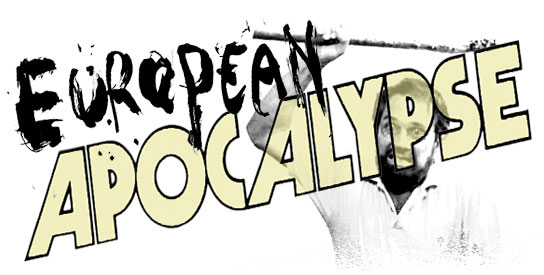 Jörg Buttgereit holds a special place in my exploitation-loving heart. But perhaps not for the reasons you’d assume. Buttgereit is the director of the infamous Nekromantik films, and, as a teenager, they were certainly the filthiest movies I’d seen. They rightly deserve their reputation as unbeatable gems of repulsive, corpse-fucking exploitation. But, while I appreciate their obnoxiousness, it’s Buttgereit’s talent – as well as Manfred O. Jelinski’s talent; his cinematographer and producer – behind the camera that makes these films so important to me. Buttgereit made filth that looked and sounded great, and they were shot on outrageously low budgets. With the energy that you can only see from a young and excitable filmmaker, Buttgereit filled his movies with strange shots containing an infectious youthful glee. Nekromantik and Nekromantik 2 are great examples of his talent, but 1990’s Der Todesking is my personal favourite…
Jörg Buttgereit holds a special place in my exploitation-loving heart. But perhaps not for the reasons you’d assume. Buttgereit is the director of the infamous Nekromantik films, and, as a teenager, they were certainly the filthiest movies I’d seen. They rightly deserve their reputation as unbeatable gems of repulsive, corpse-fucking exploitation. But, while I appreciate their obnoxiousness, it’s Buttgereit’s talent – as well as Manfred O. Jelinski’s talent; his cinematographer and producer – behind the camera that makes these films so important to me. Buttgereit made filth that looked and sounded great, and they were shot on outrageously low budgets. With the energy that you can only see from a young and excitable filmmaker, Buttgereit filled his movies with strange shots containing an infectious youthful glee. Nekromantik and Nekromantik 2 are great examples of his talent, but 1990’s Der Todesking is my personal favourite…
DER TODESKING
Germany, 1990, Jörg Buttgereit
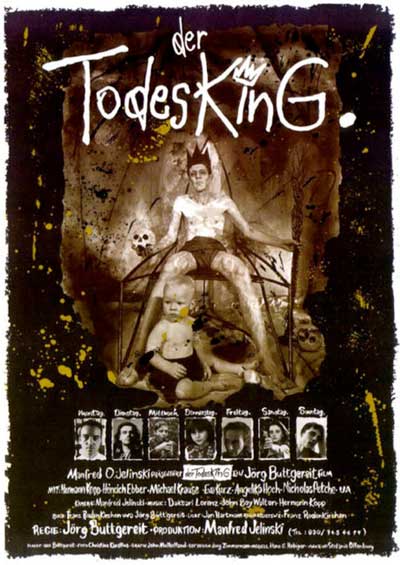
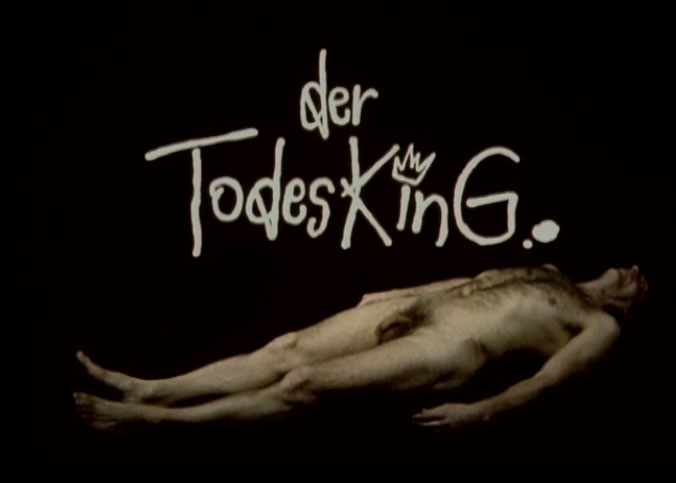
The stunning title sequence of Der Todesking
From the first suicidal episode, Buttgereit is clearly showing off his technical prowess. Shortly into the film, we are given a shot that blew my tiny teenage filmmaker-wannabe brain. And even watching it ten years later, it’s still a triumph:
Sure, it’s not perfect in its execution. But the creativity more than makes up for any minor technical faults. Many cinema elitists would scoff and spit on a shot like this calling it style-over-substance and self-indulgent. And guess what? It is self-indulgent. And its this sort of self-indulgent excess that leads to new ideas. It seems that there’s a certain point in most filmmaker’s careers where they grow up and see style for style’s sake as repugnant. Sometimes it means they grow as filmmakers, other times it sucks them dry turning them into a soulless husk – just compare Sam Raimi’s newer films to his exciting early work, and let’s not forget Dario Argento.
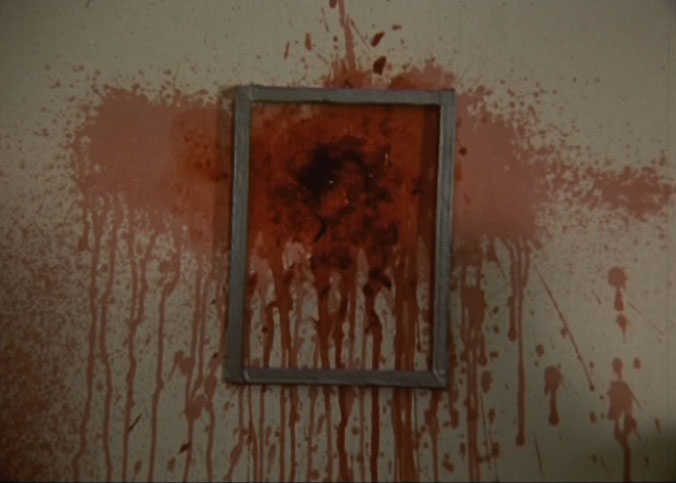
Framing violence
There are plenty of other impressive moments of visual flair in Der Todesking – a quietly saddening series of beautiful shots taken on a bridge where many people have committed suicide could easily be cut out of the film and turned into an excellent experimental short; the film’s finale featuring enough spinning camerawork to make even a lover of modern action movies with their earthquake-induced camerawork feel nauseous; and there’s even a fun and ridiculous tribute to Naziploitation that Buttgereit shoots with obvious joy. The sequence that truly had me quivering in my seat as a youngster was an extended point of view shot filled with gun blasts and squibs. See below:
Der Todesking‘s visual assault is a delight, but the audio is no slouch either. Buttgereit brings Hermann Kopp into the picture to compose a score that equals his excellent work on the Nekromantik films. Below is a sample from Der Todesking:
Haunting is a word that gets thrown around a lot when talking about horror movie scores – and I’m a perpetrator too – but it’s appropriate in talking about Kopp’s work. His scores always manage to crawl under my skin from first note to last. Kopp’s sounds and Buttgereit’s visuals work together in perfect harmony. It’s rare to see two artists that compliment each other so wonderfully.
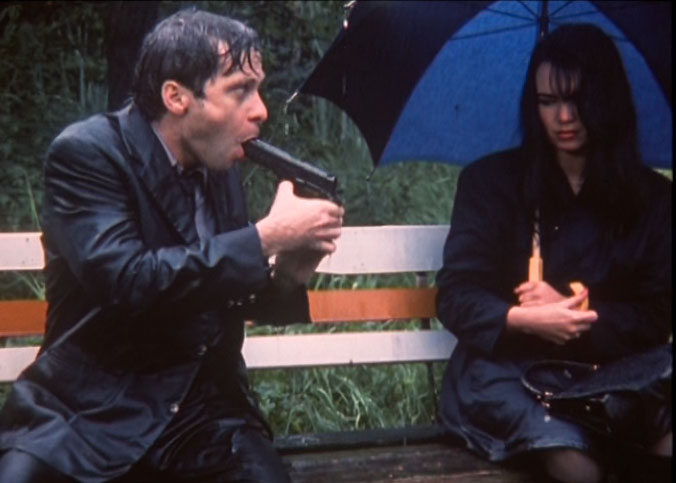
Another uplifting moment
For a film lumped in with exploitation and trash, Der Todesking really isn’t all that exploitative. It’s violent and nasty, certainly, but, unlike the Nekromantik films and even Schramm, it doesn’t feel as if Buttgereit is purely out to shock. It wanders around the topic of death, attacking it from many angles. Sometimes it strays from the point, but its experimental nature works in its favour. However, as deathly serious as Der Todesking can be, you can always see an intense love of filmmaking penetrating through the darkness.
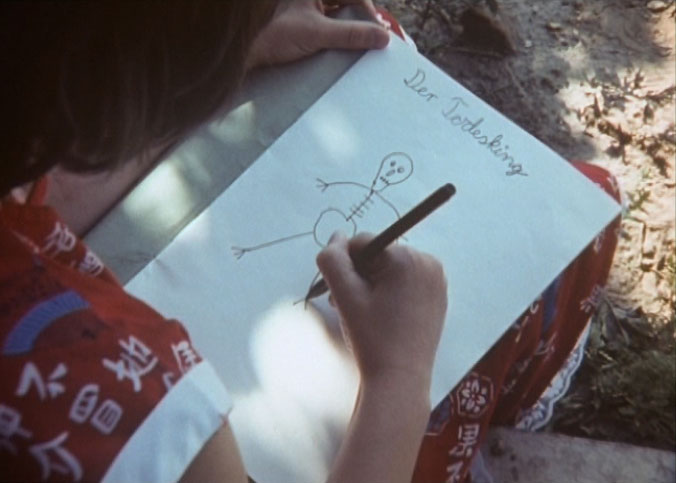
The bookends of Der Todesking




